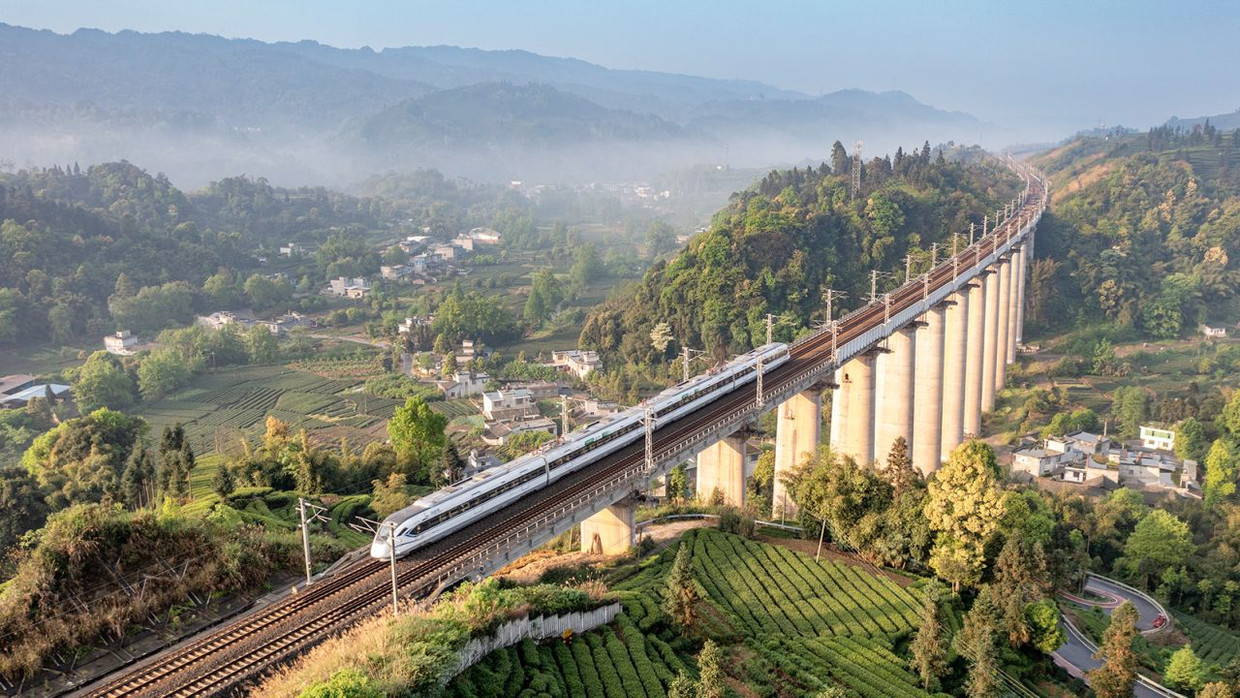High-Speed Rail in America: The Vision and Challenges
In the vast landscape of the United States, where the car has long been king and air travel dominates long-distance journeys, a vision for a more efficient and sustainable mode of transportation has emerged - high-speed rail. While high-speed rail systems have thrived in countries like Japan, France, and China, the United States has been slower to adopt this revolutionary form of transit. In this article, we will explore the vision and challenges associated with high-speed rail in America.
The Quest for High-Speed Rail in the United States
The idea of high-speed rail in the United States is not a recent development. In fact, it dates back to the early 1960s when Japan introduced its Shinkansen, or "bullet train," revolutionizing train travel. Since then, American policymakers and transportation enthusiasts have dreamed of implementing a similar system within the country. The vision for high-speed rail in the U.S. includes several key components:
1. Reduced Travel Times
High-speed rail promises to significantly reduce travel times between major cities. Imagine traveling from New York to Washington, D.C. in just a couple of hours or from Los Angeles to San Francisco in under three hours. This level of speed and efficiency could transform the way Americans move across the country.
2. Environmental Benefits
High-speed rail is a more eco-friendly mode of transportation compared to cars and airplanes. Electrically powered trains produce fewer greenhouse gas emissions per passenger mile, making them a vital part of reducing the country's carbon footprint and mitigating climate change.
3. Economic Growth
The construction and operation of high-speed rail systems can stimulate economic growth. It creates jobs, promotes tourism, and encourages business development along rail corridors. Additionally, it reduces the congestion on highways and at airports, thereby improving overall productivity.
4. Connectivity
High-speed rail systems can seamlessly connect cities, reducing the need for short-haul flights and easing congestion at airports. Passengers can enjoy a comfortable, city-center-to-city-center experience without the hassles associated with air travel.
Success Stories and Obstacles
While the vision for high-speed rail in the United States is tantalizing, the road to realization has been fraught with challenges. Let's explore some of the success stories from around the world and the obstacles faced by American policymakers:
Success Stories
1. Japan
Japan's Shinkansen, introduced in 1964, is often considered the pioneer of high-speed rail. It boasts an impeccable safety record, remarkable punctuality, and a vast network connecting major Japanese cities. The Shinkansen has become a symbol of technological prowess and efficiency.
2. France
France's TGV (Train à Grande Vitesse) system has set world speed records and serves as a model for high-speed rail success. It has connected cities across the country, making rail travel a competitive alternative to air and road transportation.
3. China
China's high-speed rail network is the largest and most extensive in the world. It has transformed domestic travel and has even expanded internationally through the Belt and Road Initiative, enhancing connectivity with neighboring countries.
Obstacles
1. Funding and Financing
One of the most significant hurdles to implementing high-speed rail in the United States is securing the necessary funding. High-speed rail projects require substantial investment in infrastructure, technology, and maintenance. This has been a major roadblock in securing political support and private investments.
2. Land Acquisition and Regulatory Challenges
Acquiring the land and rights-of-way required for high-speed rail corridors can be a complex and time-consuming process. Regulatory challenges, environmental impact assessments, and public opposition can further delay or halt projects.
3. Political Will
The political will to prioritize high-speed rail has been inconsistent over the years. Changes in leadership and shifts in priorities at the federal and state levels have hindered long-term planning and commitment to these projects.
The Potential Impact on Transportation
If the vision of high-speed rail in America can overcome these challenges, it has the potential to revolutionize the nation's transportation landscape in several ways:
1. Reduced Congestion
High-speed rail can alleviate traffic congestion on highways and reduce overcrowding at airports. This could result in smoother, more efficient transportation overall.
2. Enhanced Mobility
High-speed rail would offer an alternative mode of transportation, especially for those who do not own cars or prefer not to fly. This increased mobility can benefit both urban and rural communities.
3. Environmental Benefits
The reduced reliance on cars and airplanes would lead to a decrease in greenhouse gas emissions, contributing to the country's efforts to combat climate change.
4. Economic Growth
High-speed rail projects would stimulate local economies by creating jobs and attracting businesses and tourists to areas along the rail corridors.
In conclusion, while the vision of high-speed rail in America is promising, it faces substantial challenges. Success stories from other countries demonstrate the potential benefits of high-speed rail, but the U.S. must overcome funding, regulatory, and political obstacles to make this vision a reality. If successful, high-speed rail has the potential to transform transportation in the United States, providing a more sustainable and efficient way to connect cities and regions across the nation.
Photo by Liu Guoxing/VCG via Getty Images
Recent Posts
-
Prototype Spotlight: GE ES44AC — Modeling a Modern Freight Workhorse
Prototype Spotlight: GE ES44AC — Modeling a Modern Freight Workhorse Published 2025-09-29• 8–10 min
-
How to Build a Realistic Freight Yard: Flow, Trackwork, and Car Management
How to Build a Realistic Freight Yard: Flow, Trackwork, and Car Management Published 2025-09-25 • 8
-
Scenery Basics: From Foam to Foliage — A Quick, Budget-Friendly Guide | Midwest Model Railroad
Modeling Tutorial Scenery Basics: From Foam to Foliage Published 2025-09-23 · 7–9 minute read Li




